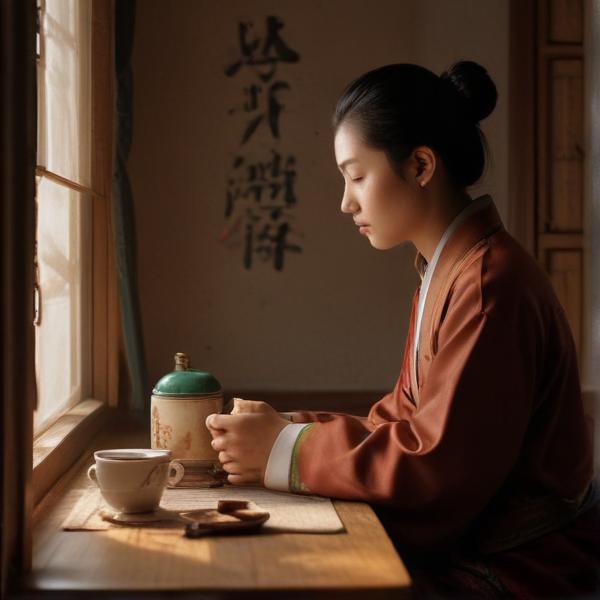基本信息 (Basic Information)
含义与用法 (Meanings & Usage)
中文核心释义 (Core Chinese Meaning): 盛大,光明,美丽,有气势的样子,也指下棋(多用于古代)。
英文核心释义 (Core English Meaning): grand, splendid, magnificent; also an ancient reference to playing chess (often used in classical texts).
象形意义 / 为何这么写 (Pictographic Meaning / Writing Rationale)
文言文释义 (Classical Chinese Meaning)
深入学习 (In-depth Study)
字源故事 (Origin Story)
字形演变 (Character Evolution)
常用词语和例句 (Common Words & Examples)
奕奕 (spirited; radiant; full of energy or vitality)
他精神奕奕地走进教室。
Eng: He walked into the classroom full of energy.
光彩奕奕 (radiant and full of luster; dazzling)
新娘子看起来光彩奕奕。
Eng: The bride looks radiant and dazzling.
相关成语 (Related Idioms)
相关成语信息待补充。Related idiom information pending.
多语言翻译 (核心释义) (Translations (Core Meaning))
- French: grandiose; splendide; rayonnant
- German: großartig; prächtig; strahlend
- Spanish: grandioso; magnífico; radiante
- Italian: grandioso; splendido; radioso
- Portuguese: grandioso; esplêndido; radiante
- Russian: величественный; великолепный; сияющий
- Arabic: مهيب؛ رائع؛ متألق
- Persian: باشکوه؛ درخشان؛ مجلل
- Dutch: groots; schitterend; stralend
- Polish: wspaniały; okazały; promienny
- Vietnamese: tráng lệ; rực rỡ; huy hoàng
- Ukrainian: величний; пишний; сяючий
视频学习资源 (Video Learning Resources)
通过以下链接在热门视频网站搜索 "奕" 的更多讲解:
Search for more explanations of "奕" on popular video sites:
- 在 Bilibili.com 搜索 "奕 字源 说文解字" (Search on Bilibili)
- 在 YouTube.com 搜索 "Yi character origin etymology" (Search on YouTube)
网络参考 (Web References for "奕") ()
网络内容摘要 (Web Content Summary):
```html奕(读音:yì),是一个常见的二级汉字。 奕 (pronounced "yì") is a commonly used secondary-level Chinese character.
- 基本含义:“奕”本义为“大”,引申有“超过一般的、盛大”的意思;在表述历史、家族传承时,常指“累世、代代”。 Core meaning: The original meaning of "奕" is "large" or "grand." It has also been extended to mean "outstanding" or "generations" in the context of family lineage or history.
- 象形起源与文化背景:该字早见于小篆,常用于古文如《诗经》。虽然没有广为流传的象形故事,但常用于表示盛大、光明。 Origin & cultural context: "奕" first appeared in the Small Seal Script and can be found in classical texts like the Book of Songs (Shijing). It often conveys grandness or brightness.
- 常见用法与词语:“奕奕”(形容光明、精神饱满的样子)、“奕世”/“奕代”/“奕叶”(表示家族世代相承,如“奕世簪缨”指世代为显贵)。 Common usages: "奕奕" (describing brightness or vigorous spirit); "奕世", "奕代", "奕叶" (all meaning successive generations, e.g., "奕世簪缨" refers to a family of hereditary officials).
- 易混淆点:容易与“弈”(下棋)字混淆,但意思不同。 Possible confusion: "奕" is easily confused with "弈" (which refers to playing chess), though their meanings are different.
信息质量说明:“奕”多用于古文及书面语,现代口语中使用较少,且科普内容有限。 Note: "奕" mainly appears in classical texts and formal writings, and is less common in modern spoken Chinese. Public knowledge about the word is relatively limited.
```奕的解释|奕的意思|汉典"奕"字的基本解释 - 漢典
(5) 又如:奕世簪缨(子孙世代都为显宦贵族);奕世(累世,代代);奕代(奕世,累世);奕叶(累世,代代) (6) 光明 [bright] 故其华表则镐镐铄铄,赫奕章灼,若日明之丽天也。—— 三国 魏 · 何晏 《景福殿赋》 (7) 又如:奕奕(光明的样子;亮光闪动的样子);奕赫(光显的样子 ...
奕(汉语汉字)_百度百科
奕(读yì),是汉字通用规范二级字,此字已知的最古形体为小篆,也见于先秦著作《诗经》。本义是大,后引申为超过一般的,又用于时间、时代方面,表示累、重。(基本信息栏主要参考资料: )
更多图片 (奕 More Images) ()
